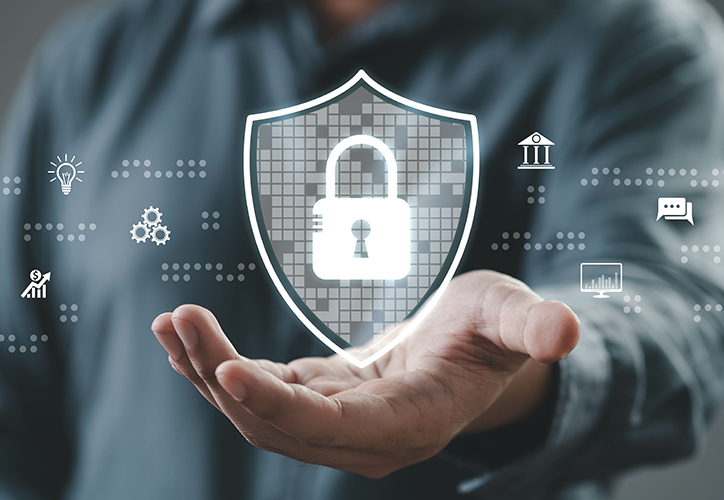SIEM vs. SOAR vs. XDR: What’s the Best Choice for You?
Josh CooperWith so many security tools out there, it's easy to feel overwhelmed or fatigued in your search. Some organizations end up using too many tools, thinking more is better. Aside from creating unnecessary overlap, this can be confusing and risky. Plus, you could lose track of what each tool does for you, and miss out on crucial protection.
Among these security solutions, companies often find themselves deciding between SIEM, SOAR, and XDR. So what does each of these solutions do, and which is best for you?
SIEM vs. SOAR vs. XDR — what’s the difference?
SIEM (Security Information and Event Management)
SIEM solutions provide real-time analysis of security alerts generated by hardware and software in an organization. Gaining popularity in the mid-2000s, SIEMs were effective for their time.
However, they now struggle with unpredictable costs, excessive noise, and limited detection and response capabilities. They require specialized workers for setup and analytics generation.
Key features:
- Log and event data collection: Gathers data from various sources like firewalls, antivirus, and intrusion detection systems.
- Alerting: Notifies security personnel when certain criteria are met, such as suspicious activity.
- Dashboards: Provides visualizations of security status.
- Data storage: Retains historical data for compliance, investigations, and other use cases.
- Threat detection: Identifies signs of malicious activity.
- Data aggregation and correlation: Combines data from various sources and finds relations between them.
Example: If an employee accesses a sensitive file late at night, a SIEM might flag this as suspicious activity and alert the security team.
SOAR (Security Orchestration, Automation, and Response)
SOAR platforms help organizations to collect data about security threats and respond to low-level security events without human intervention.
Organizations often enhance their SIEM with a SOAR solution to aggregate alerts from various sources. While SOAR brings automation and orchestration, it also comes with high costs and complexity.
Key features:
- Workflow automation: Automates repetitive tasks and processes.
- Incident management: Helps in handling and responding to security incidents.
- Threat intelligence: Gathers data about new and emerging threats.
- Collaboration: Allows different security tools and teams to work together.
Example: If a malware signature is detected on a network, a SOAR solution might automatically isolate the affected system, notify the security team, and update firewall rules to prevent further infections.
XDR (Extended Detection and Response)
XDR is a security solution that automatically collects and correlates data from multiple sources to identify and respond to threats. XDR acts as an interconnected system, providing effective detection and response to targeted attacks.
It supports behavior analysis, incident response, threat intelligence, and automation. XDR reduces the manual workload, offering advanced detection, rapid response, and intuitive automation without the added costs of a SOAR solution.
Key features:
- Broader visibility: Collects data from endpoints, network, servers, and cloud.
- Automated threat detection: Uses advanced analytics to identify threats.
- Incident response: Provides tools to investigate and address security incidents.
- Integration: Works with other security tools to provide a holistic view of the security landscape.
Example: If a phishing email bypasses the email security gateway, XDR can detect suspicious activity when the recipient clicks on the link, then block the malicious website and alert the security team.
How to choose between SIEM, SOAR, and XDR
These three solutions fill different gaps, so choosing between them is a matter of your organization's needs. What is your priority when implementing a security solution? Make sure you’re clear on what you want, and weigh priorities like:
- Compliance
- Automation
- Ease of use
- Maximizing protection
- Value for investment
For instance, if you’re worried about compliance only, SIEM is the tool for you. If you’re seeking out automated tools to get some time back in your day, SOAR is probably your best choice. For a more complete solution, you can go with XDR.
Whether you’re settled on a choice or still deciding, the Katalyst team can guide you in the direction that makes the most sense for you, providing necessary maintenance and making sure you avoid getting overtooled. Since we’re vendor agnostic, we’ll help you implement and manage your new setup with confidence, regardless of your choice.
Should I combine these options?
Combining SIEM, SOAR, and XDR can offer a holistic approach to cybersecurity, especially for larger organizations. However, this is less feasible for small and even medium-sized businesses.
Integration can add complexity, increase costs due to potential overlaps in functionalities, demand more resources for management, and pose potential integration challenges, especially if tools are from different vendors. This is before mentioning the risks introduced by overtooling.
SIEM requires significant tuning and monitoring, which can be complemented by SOAR, while XDR offers broader capabilities but still demands upkeep. And while SOAR and XDR have overlapping functionalities, nothing truly replaces the foundational role of SIEM in the cybersecurity landscape.
Parting advice for picking a solution
As you move forward, there are a few pieces of advice worth bearing in mind:
- Be wary of vendor promises: While vendors might showcase quick and easy setups (“ready to go in just a few minutes”) in demos, the reality is that all three solutions (SIEM, SOAR, and XDR) demand regular care and maintenance. Without this, potential threats might go unnoticed.
- Don’t get fooled by buzzwords: The cybersecurity industry is gravitating towards XDR, with emerging terms like MXDR and EDR. The “X” in XDR stands for “extended” or "extensible," making it a broad, catch-all term. As new "DR" solutions emerge, be sure you understand their unique features and differences from existing tools. Stay cautious and informed, as the security sector is rife with buzzwords.
- Deployment alone isn’t enough: Simply deploying a solution doesn't guarantee protection. Even if you receive alerts about resolved threats, it doesn't mean all threats are being addressed, so continuous vigilance is essential. Ensure your system remains secure, new endpoints are safeguarded, unnecessary tools are removed, and all rules are appropriately tuned.
For those seeking assistance in managing these solutions, Katalyst offers a managed security service, providing you with ongoing maintenance and vigilant monitoring. This lets your organization stay ahead of potential threats, without the hassle of constant manual oversight.
Want to learn more? See our current and past work and find out how we can keep your business safe.



